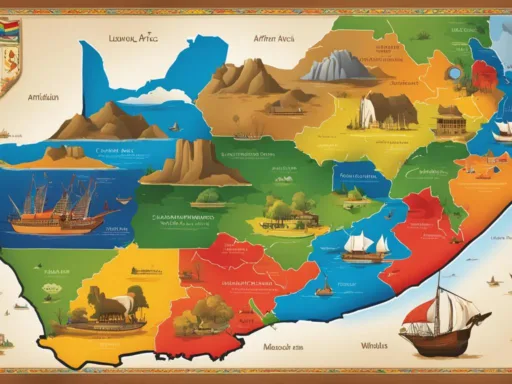The linguistic landscape of Finland paints a vivid picture of cultural diversity and historical depth, showcasing an array of languages that form the fabric of its society. While the Finnish language stands as the most widely spoken tongue, commanding the speech of 86.52% of the population, its counterpart, the Swedish language, also plays a pivotal role, representing 5.19% of Finnish residents. This linguistically diverse nation prides itself on its commitment to bilingualism, integrating both Finnish and Swedish into the very heart of its educational and governmental frameworks. The respect for language diversity doesn’t stop there; Finland’s dedication extends to the various minority languages, including the rights-preserving legislation for Sámi dialects, Finnish Romani, and sign languages unique to the region, adding vibrant threads to the tapestry of languages spoken in Finland.
Beyond these, the country’s demographic shifts have introduced a plethora of immigrant languages, further enriching the linguistic landscape of Finland. Join us as we delve into the harmonious multilingual melody played out in the daily life of Finland, where history, culture, and language meet.
Key Takeaways
- Finnish and Swedish stand as official languages, integral to Finland’s education and governance.
- Language diversity Finland is evident with over 150 languages spoken across the country.
- Significant efforts are made to preserve minority languages and their cultural significance.
- Finnish Sign Language and Finland-Swedish Sign Language support the country’s deaf community.
- The linguistic landscape of Finland reflects a society that values linguistic heritage and education.
- Bilingualism is a common trait among Finns, with a substantial number conversant in English and Swedish.
An Overview of the Languages Spoken in Finland
The symphony of languages echoing throughout Finland is a reflection of its deep-rooted history and the societal embrace of linguistic diversity. From the robust presence of the Finnish language to the melodic whispers of minority tongues, Finland’s rich tapestry of dialects paints more than just a cultural landscape—it embodies the nation’s commitment to preserving its heritage and fostering an inclusive community.
The Linguistic Landscape of Finland
In a society where multiculturalism is threaded through the very fabric of daily life, understanding the vibrancy of the Finnish verbal ecosystem is essential. It is a soundscape marked by the harmonious coexistence of multiple dialects, where the official languages Finland acknowledges—Finnish and Swedish—echo from the coastlines of the Baltic Sea to the northern reaches of Lapland.

Official Languages: Finnish and Swedish
Not merely a means of communication but a cornerstone of social identity, the Finnish language serves as the voice of approximately 86% of the nation’s population. Its counterpart, the Swedish language, is spoken by 5% and carries equal legal weight. These languages not only facilitate daily interactions but also underpin education and governance, reflecting an enduring legacy in Finland’s societal structure.
The Importance of Preserving Minority Languages
Reverberating with the determination to protect linguistic variety, Finland’s language policies are characterized by their attention to minority languages Finland is home to. Enduring sounds of the indigenous Sámi dialects, the unique cadence of Finnish Romani, and the visual poetry of Finnish Sign Language are officially recognized, safeguarded by legislation and celebrated for their contribution to the nation’s cultural wealth. This not only fortifies a sense of identity among speakers but also weaves their stories into the nation’s collective legacy.
Embracing this multiplicity, the Finnish educational system and legal framework cast a protective net over these linguistic treasures, ensuring that the stories, traditions, and knowledge they carry forth will resonate for generations to come.
Languages Spoken in Finland: Official and Minority Languages
Finland’s linguistic fabric is interwoven with the rich hues of its languages spoken, reflecting a society that embraces bilingualism and cherishes linguistic diversity. The Finnish language, spoken by 88.98% of the population, forms the bedrock of national communication, while the Swedish language, used by 5.31%, stands as its historical coequal. Amidst this bilingual backdrop, the enchanting Sámi languages of Lapland carry official status, symbolizing Finland’s dedication to its indigenous heritage and minority languages.

Embarking on a journey beyond the official tongues of Finland uncovers an array of minority dialects, each with its own narrative and cultural significance. The Finnish government’s commitment to language rights ensures that minority speakers, from the Finnish Romani to the Karelian speakers, continue to have their voices heard and their linguistics preserved. This inclusive approach not only bolsters Finland’s cultural tapestry but also enriches the nation’s collective identity.
Below is a detailed breakdown of the linguistic landscape of Finland, highlighting the prevalence of key languages and their role within Finnish society:
| Language | Percentage of Speakers | Official Status | Notable Regions |
|---|---|---|---|
| Finnish | 88.98% | National official language | Throughout Finland |
| Swedish | 5.31% | National official language | Coastal areas, Åland Islands |
| Sámi Languages | Less than 0.04% | Regional official language | Northern Lapland |
| Russian | 1.27% | No official status | N/A |
| Estonian | 0.84% | No official status | N/A |
| English | Widespread as a second language | No official status | N/A |
Intricately, Finland’s language policies are engineered not only to honor the historical prominence of Finnish and Swedish but also to sustain the linguistic diversity integral to the nation’s identity. From the petal-like delicacy of minority languages to the sturdy roots of Finnish and Swedish, Finland nurtures its linguistic ecosystem with a fervor that fosters bilingualism in Finland and deepens intercultural understanding.
The Finnish Language: A Finno-Ugric Treasure
The Finnish language is a phonetic treasure trove within the Finno-Ugric family—a linguistic lineage that sets it apart from the Indo-European languages. Serving as the voice of the majority in Finland, Finnish is also a part of language education in Finland, establishing it as an instrumental element of Finland’s cultural and educational domains.
History and Geographical Spread of Finnish
Finnish, known for its rich history, has been documented in written form for approximately 500 years. Its speech community extends beyond the borders of Finland, reaching into neighboring countries such as Sweden and Norway, and even the diaspora in the USA and Australia. Finnish boasts several dialects, each with its own distinct charm, contributing to the depth and variety of the language. The geographical spread of Finnish underscores its historic relevance and serves as a testament to the language’s enduring presence.
Characteristic Features of the Finnish Language
The Finnish language possesses unique linguistic features that distinguish it from other languages. Such features include extensive use of cases in its grammar, an abundance of vowel sounds, and an almost rhythmic quality due to its agglutinative nature. As a core subject, language education in Finland celebrates these characteristics, highlighting them as part of the nation’s academic fabric. Closely related to Estonian and less so to the various Sami languages, Finnish remains a vital component of Finland’s linguistic heritage and continues to enrich the cultural dialogue within and beyond its borders.

Swedish in Finland: A Historical and Cultural Pillar
The Swedish language in Finland resonates with echoes of the past and infuses the country’s societal fabric with its enduring presence. As a historical and cultural pillar, the Swedish language has played a pivotal role throughout the centuries, from being the administration’s language to now representing about 5.19% of the country’s linguistic demography. The presence of Swedish speakers is prominently felt in regions such as the Åland Islands and in major cities like Helsinki, Espoo, Porvoo, and Vaasa.

The distinctive variant known as Finland-Swedish contributes to the rich tapestry of language diversity Finland fosters today. Efforts to maintain its distinct identity are reflected in the literary canon of the region, which boasts celebrated writers like Tove Jansson and Edith Södergran, thereby ensuring that the uniqueness of Finland-Swedish remains intact and does not drift too far from the standard Swedish used in Sweden.
Reflecting on the influence of Swedish on bilingualism in Finland, we find an education system that compels the study of both official languages, fortifying not only the cognitive benefits associated with bilingual education but also reinforcing social bonds across different language communities.
| City | Percentage of Swedish Speakers | Significance in Bilingualism |
|---|---|---|
| Helsinki | 5.5% | Capital city with a strong bilingual identity |
| Espoo | Significant Minority | Education and government services in Swedish |
| Porvoo | Notable Community | Historical bilingual enclave |
| Vaasa | Majority in certain areas | Cultural and linguistic diversity is celebrated |
The essence of language diversity Finland cherishes can be seen in practices like Taxell’s paradox. This approach underlines the belief that fostering monolingual solutions in certain domains is key to ensuring functional bilingualism, where multilingual solutions would otherwise lead to monolingualism. Such insights into language policy making in Finland highlight thoughtful considerations given to the practical dynamics of maintaining bilingualism within a multicultural society.
In summary, the Swedish language in Finland is more than a communication tool; it is a vital cultural heritage that enriches the nation’s historical narrative and supports the collective bilingualism that Finlanders hold dear.
Understanding the Role of Sámi Languages in Finland
Embarking on a journey into the heart of Finnish Lapland reveals the enduring voice of the Sámi languages—vital strands of language diversity Finland treasures. The indigenous Sámi people, residing across the northern expanse of Finland, are the custodians of this priceless linguistic heritage. The three Sámi languages spoken within Finland’s borders—Northern Sámi, Inari Sámi, and Skolt Sámi—each boast distinct written forms and cultural expressions, underscoring the rich tapestry of minority languages Finland is known for.
Diversity of Sámi Languages in the Finnish Lapland
The Sámi languages, with their unique syntax and lexicon, serve as a foundation of identity for the Sámi people. The multifaceted nature of these languages is recognized and celebrated as a core component of the nation’s multicultural ethos. Northern Sámi, being the most widely spoken, along with Inari and Skolt Sámi, encapsulate the distinctive ways of life and knowledge systems inherent to the Sámi culture, amplifying the glorious linguistic palette of the region.
Educational and Legislative Support for Sámi Speakers
Finland’s commitment to preserving linguistic diversity extends beyond mere acknowledgment. Robust language policies Finland employs are manifested in the shape of educational efforts that foster the learning and use of Sámi languages, especially within their native regions. Additionally, legislative measures anchor these languages within public administration and services in Sámi-dense localities, ensuring the continuance and development of Sámi cultural heritage. The unwavering institutional support for Sámi speakers is a testament to Finland’s dedication to enriching its national identity through the celebration and protection of its linguistic minorities.
FAQ
What languages are spoken in Finland?
Finland has a diverse linguistic landscape with Finnish and Swedish as the official languages. There’s also a rich variety of minority languages, including the Sámi languages, Finnish Romani, and Karelian, as well as immigrant languages like Russian, Estonian, Arabic, and Somali. In total, over 150 languages are spoken in Finland.
Are both Finnish and Swedish taught in Finnish schools?
Yes, Finnish and Swedish are both taught in Finnish schools. Finland’s education system supports bilingualism, and students typically learn both languages during their education, although Finnish is the predominant language in most of the country, while Swedish is more dominant in certain areas, such as the Åland Islands.
How does Finland preserve its minority languages?
Finland has several language policies in place to preserve and protect its minority languages. This includes official status and support for the Sámi languages in northern regions, as well as educational and cultural initiatives to maintain and promote other minority languages like Karelian and Finnish Romani.
What is the history and geographical spread of the Finnish language?
The Finnish language has over 500 years of written history and is a Finno-Ugric language related to Estonian and the Sámi languages. It is spoken by the majority of Finland’s population and by Finnish communities in Sweden, Norway, Russia, the USA, and Australia, embodying a significant element of Finland’s cultural identity.
What are the characteristic features of the Finnish language?
The Finnish language features a phonetic writing system, extensive use of cases in its grammar, and the absence of gender pronouns. It has numerous dialects and bears less resemblance to the Indo-European language family, making it unique in Europe’s linguistic landscape.
Why is Swedish important in Finland?
Swedish is an important language in Finland due to its historical status as the country’s administrative language and its ongoing cultural significance. It is spoken by a sizeable minority and is prevalent in regions like the autonomous Åland Islands, and cities such as Helsinki and Vaasa.
What is Finland-Swedish?
Finland-Swedish refers to the variant of Swedish spoken in Finland. It has its own dialects and a literary tradition, and despite its similarities to standard Swedish spoken in Sweden, there are notable differences in vocabulary and pronunciation.
How are the Sámi languages supported in Finland?
The Sámi languages are officially recognized in certain northern regions of Finland, such as Enontekiö, Inari, Utsjoki, and part of Sodankylä. The government supports Sámi language education, broadcasting, and cultural projects to ensure the vitality and development of these indigenous languages.
Is Finland a bilingual country?
Yes, Finland is officially bilingual with Finnish and Swedish as its official languages. However, in practice, the country is multilingual, with many citizens also speaking English and other languages due to the population’s high linguistic proficiency.
What efforts are made to preserve languages like Finnish Romani and Karelian?
To preserve languages like Finnish Romani and Karelian, Finland provides educational resources, supports cultural activities, and ensures their inclusion in media and public life. This multifaceted approach aims to maintain these languages for future generations.






